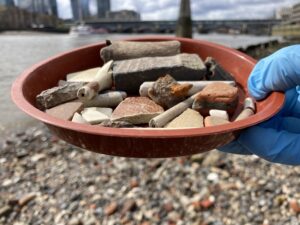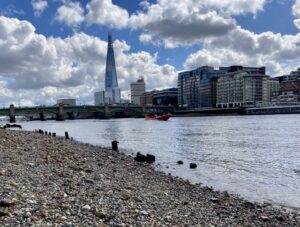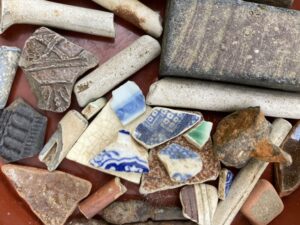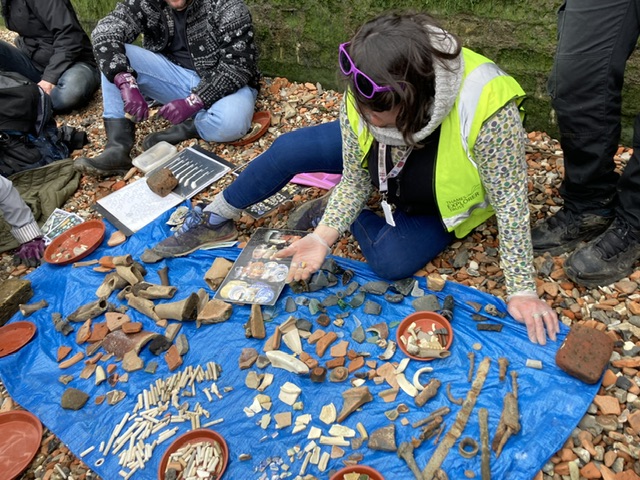The Thames in London has acted as a giant rubbish dump for hundreds of years. At its worst, the industrial and household waste that flowed into the river robbed it of life and contributed to the ‘Big Stink’ in 1858. Yet the detritus deposited over the years provides rich pickings for mudlarkers.
In the 19th Century ‘mudlarks’ searched the shores at low tide for anything they could sell to eke out a living. Nowadays, mudlarking the Thames is the preserve of those lucky enough to have secured a permit. Or those, like me, who have signed up to an outing with the Thames Explorer Trust.

I joined a group of prospective mudlarkers under the Millennium Bridge. Our guide, an archaeologist and historian, started with a brief overview of London’s history and what makes the River Thames an amazing archaeological site. She ran through the items we might find and passed some exhibits around. And, although the river is cleaner than it once was (despite Thames Water’s efforts), she gave us the lowdown on its potential nasties. I didn’t need to be told twice not to touch my face!

Afterwards we donned gloves and climbed down onto the foreshore to start our exploration. At first glance the shore looked like a jumble of pebbles, sand and rubbish left by the receding tide. However, as I concentrated on my area I started to notice the stems of clay pipes, parts of tiles and tiny pieces of pottery.
Although I was excited to find clay pipe stems, they were the cigarette butts of their day. Pipes were pre-filled with tobacco and often tossed into the Thames after a single use. Hence the reason why they are still turning up in droves. It’s rare to find an intact pipe but I did find a couple of pipe bowls, along with countless pieces of stem.

Animal bones and oyster shells also litter the foreshore. Oysters were once cheap and eaten by the working class, often as a substitute for beef. The shells were discarded in the Thames afterwards. Similarly, animal bones, were thrown into the river by butchers and slaughter houses. Our guide estimated that some of the bones (mostly sheep and cow) found by our group were centuries old.
After an hour or so of searching we took everything back and laid it all out on a blue tarpaulin. The guide had bought along a poster with pictures of different items from the various time periods. Although no-one found any Roman items I was excited to discover I’d picked up some Tudor pottery. I also found a saddle stud, lots of nails, bones, pipe stems and pieces of tile. Despite the normality of these items I was very pleased with my haul.

Our finds were returned to the Thames, to be swallowed up by the river once more. Only mudlarkers with permits are allowed to remove items from the shore, but I like the idea of leaving the items in-situ (ready for the next mudlarkers).
Challenge complete!
Mudlarking beside the River Thames – completed April 2024. Pop over to see the rest of my 60 things to do before I’m 60 list.
